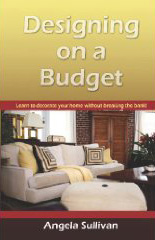
Hi Friends,
Architectural detail is always a plus. Try adding panel molding to your space. Its a weekend project that adds dimension to your walls for less than a $100. This truly delivers a huge bang for your buck. Although, our picture has very decorative molding the same look can be achieved with standard grade molding. Follow the steps below to get the job done this weekend: Happy Molding!
Steps:
1. Prime and paint the molding and let it dry.
2. In our room, our panels are all the same height, but the width varies. Measure your walls and determine the appropriate dimensions for your paneling. Standard chair rail height, which is 32 inches above the floor, is an appropriate height for the panels.
3. Miter cut the molding to the desired length and width.
4. Make a reference line around the room to mark the top point of your molding. Use a level to make sure your lines are straight and evenly spaced. Continue to use the level while assembling to make sure you are attaching the molding evenly.
5. Attach the molding with a nail gun.
6. Use putty to fill in the nail holes and touch up the paint.
Check back for more ideas and enjoy your new panel molding.
Your kind contribution will allow us to continue sharing great, no cost and cost saving ideas for your space. Click the "Donate" button below to make a contribution. Thank you!
Live well,
Yvonne






